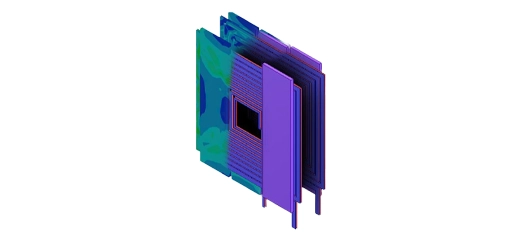WHAT IS 5G BEAMFORMING?
In wireless communication, antennas radiate signals in all directions. Beamforming is simply a wireless technique that concentrates signals toward one specific receiving device. That’s a big deal. It makes direct connections faster, more focused, sharper, and more reliable. But how to achieve that? Use Multiple Input Multiple Output (MIMO) antennas.
MIMO
In addition to high gain, MIMO antennas enable the 5G beamforming. The mathematics behind the way MIMO enables beamforming is rather complex. But in a nutshell, by controlling the magnitude and phase of each antenna, the beam gets formed in the desired direction without the need to boost broadcast power.
HFWorks
5G uses frequencies beyond 28 GHz which makes the design of MIMO challenging and expensive. By using HFWorks, you can virtually build your MIMO, and play with various combinations of magnitude and phase to study the effects on the resulting beam. In addition, you can also virtually obtain all the antenna parameters, including, gain, directivity, radiation pattern, SWR, etc. Moreover, HFWorks is fully integrated, i.e. plugin, in SolidWorks, the #1 3D CAD platform. As a result. HFWorks makes 5G beamforming design easy and affordable.
AN EXAMPLE
Single two-port microstrip patch antenna
HFWorks is used to model a single-patch antenna fed by two ports is shown above. An impedance transformer is added to improve the impedance characteristics. The width wt of the impedance transformer is varied to study the effects on the antenna characteristics.
S-parameters of the single two-port patch antenna for different wt
The S11 graphs clearly show that the largest bandwidth is obtained when wt = 0.05 mm. In addition, the insertion loss |S21| < -20 dB for all cases.
After selecting the proper single antenna, or the so-called the unit cell, and studying its performance, an antenna array is created.
Series-fed 2×2 patch antenna array
The S-parameters of the array show a good matching around 28 GHz with isolation between the ports better than 20db.
Simulated S-parameters of the 2×2 array antenna
Because of the symmetry, only the phase of one port is adjusted to study the beam-scanning capability of the 2×2 array antenna. When all ports phases are equal to zero degree, a maximum gain of 13.2 dB (θ=0º) is realized. To scan the beam, at each time a phase of one port is adjusted and the rest are zero. As shown below, by varying the phase of the antennas, the beam is shaped, i.e. Beam-formed differently.
3-D radiation Patterns of the 2×2 array antenna
SUMMARY AND TAKEAWAYS
Beamforming in 5G networks is made possible through the strategic use of MIMO antennas, which adjust the magnitude and phase of signals to direct communication efficiently. HFWorks plays a crucial role in this process by enabling the simulation and optimization of MIMO designs, ensuring that the complex requirements of 5G beamforming are met. This approach not only enhances network performance but also paves the way for the widespread adoption and advancement of 5G technology.



